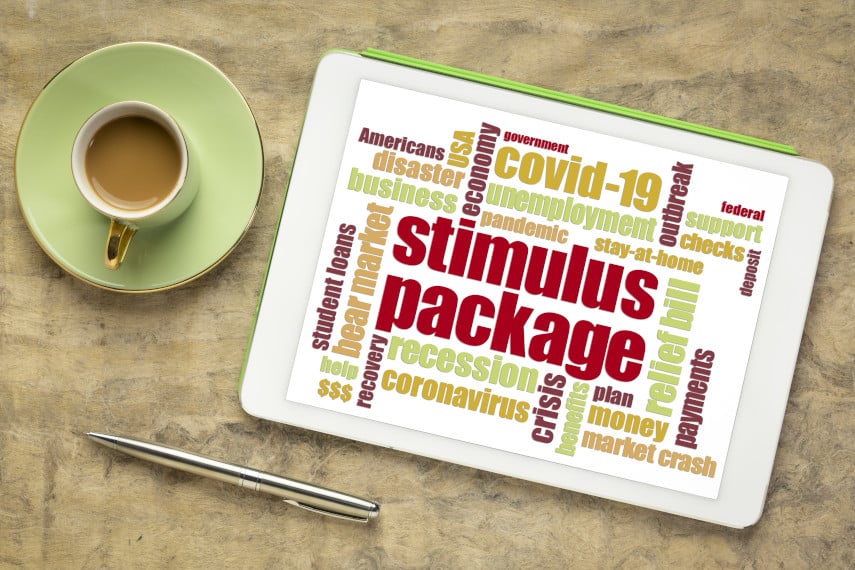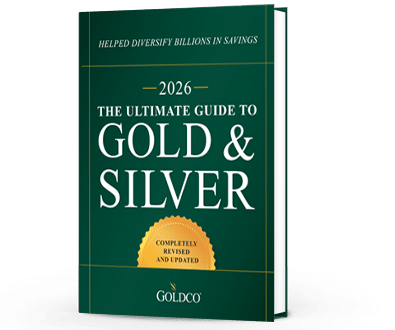6 Indicators of a Potential Recession
It seems that in the media today there are more and more mentions of the dreaded R-word: recession With growing economic uncertainty, the threat of potential recession seems to be growing as...
Economy

With the passage of President Biden’s $1.9 trillion stimulus package, the federal government is continuing to spend money like a drunken sailor. And Biden isn’t content with his victory on this issue either. Now he’s proposing a $2 trillion infrastructure package. And after that, you can almost guarantee that there will be even more stimulus spending.
All of this spending comes at a price, however, and it’s a steep one. As with many things in life, it’s the little guy that ends up paying the price. And that means that you as an investor will likely end up paying your fair share or even more.
We could be at a watershed moment now for our country in numerous ways, not least among them the direction of the economy. With the federal government abandoning all sense of fiscal sanity, we’re on the verge of a brave new world of out of control federal spending. Here are three ways this massive amount of stimulus spending will affect you as an investor.
The first and foremost effect of this spending is a massive increase in government debt. The national debt is currently nearly $28 trillion, and that is set to climb. The Congressional Budget Office was already projecting a $2.3 trillion deficit this fiscal year, and the $1.9 trillion stimulus package will only add to that. Any further additional spending will increase that amount, and the national debt could very well end up being over $30 trillion by the end of the fiscal year.
All of this new debt requires new issuance of Treasury securities, and that requires buyers for the new debt. So far the Fed has been more than willing to monetize these trillions of dollars of new spending.
But paying attention just to new issuance ignores the fact that Treasury has to continue rolling over massive amounts of short-term debt, as existing debt matures and new debt has to be issued to replace it. And in recent weeks those debt auctions haven’t always gone as planned.
The danger with all this debt is that there won’t be enough buyers for it, or that the interest rates at which they will buy will spike, increasing the amount of money the government will have to pay in servicing its debt. And if the government really gets into trouble, the Fed will likely continue to bail out the government by monetizing even more debt.
Of course, the existing debt monetization has its drawbacks too. Money supply figures have increased dramatically as a result of the Fed’s asset purchases, unlike during the 2008 crisis. The M1 money supply increased nearly 70% last year, while M2 increased nearly 25%. And the Fed is taking measures to obscure what it is doing by adopting new definitions of M1 and M2, thus making it very difficult to compare what it’s doing now to what it has done in the past.
The government could also try to obscure the fact that prices on food, gas, and other staples are rising by making adjustments to its various consumer price index (CPI) measurements to make it seems that inflation is lower than it actually is. Meanwhile, anyone who goes grocery shopping on a regular basis has seen prices increase significantly over the past year on many staples.
With so much additional stimulus spending, the likelihood of even further inflation will only rise. The Fed has stated that it wants to let stimulus rise above its traditional 2% target, but there’s a real danger that in doing so the Fed could let inflation spiral out of control. If we end up returning to an environment like the 1970s in which we see high inflation and weak stock markets, the results could be very dire for investors.
Everyone likes to see free money, but when everyone gets free money, its effect for any one person is muted. When most people in the country are getting thousands of dollars of free money from the government, when that money gets spent it ends up raising prices for everyone, diluting the effect of that money.
What we’ve seen now with a third round of stimulus checks, and now monthly payments of the child tax credit, is that the federal government is trying to get people dependent on handouts. The more people dependent on the government, the greater the government’s power. And with these latest stimulus packages, people who otherwise wouldn’t have received traditional forms of welfare are now getting onto the government dole.
The danger here is that if more people grow accustomed to these stimulus payments, they’ll clamor for more money. That, in turn, could set off a cycle of ever greater stimulus payments and ever greater spending, leading to ever more debt and higher inflation. If this isn’t nipped in the bud soon, it could lead to this cycle of ever greater spending that may not be able to be stopped.
It has been nearly 40 years since the last high-inflation rate investing environment, and thus most investors alive today have no experience investing in such an environment. The potential for massive losses among these investors is therefore great. Defending yourself and the value of your investments in an atmosphere of high inflation rates and stagnant stock markets could require you to rethink your investment strategy.
Many investors have already begun that process by starting to move their investments into precious metals such as gold and silver. Gold and silver both performed well during the stagflation of the 1970s, with gold growing over tenfold over the course of that decade. Silver performed even better, growing nearly eighteenfold. That’s the kind of performance gold and silver can offer during times of high inflation and weak economic growth.
The key to getting that kind of performance out of gold and silver, however, was to invest early, before prices shot up. As with any asset that’s rising in price, those who buy in during the rise don’t benefit nearly as much as those who had the foresight to predict the rise and take advantage of it.
If you’re worried about the stimulus tsunami and the effect it will have on the value and purchasing power of your investments, now is the time to start thinking about protecting those investments. You don’t want to wait before it’s too late to start protecting your hard-earned wealth.
With unprecedented levels of monetary and fiscal stimulus taking place recently, now is the time to start taking concrete steps to protect your investments. Contact the experts at Goldco today to find out how gold and silver can help you safeguard your assets.

